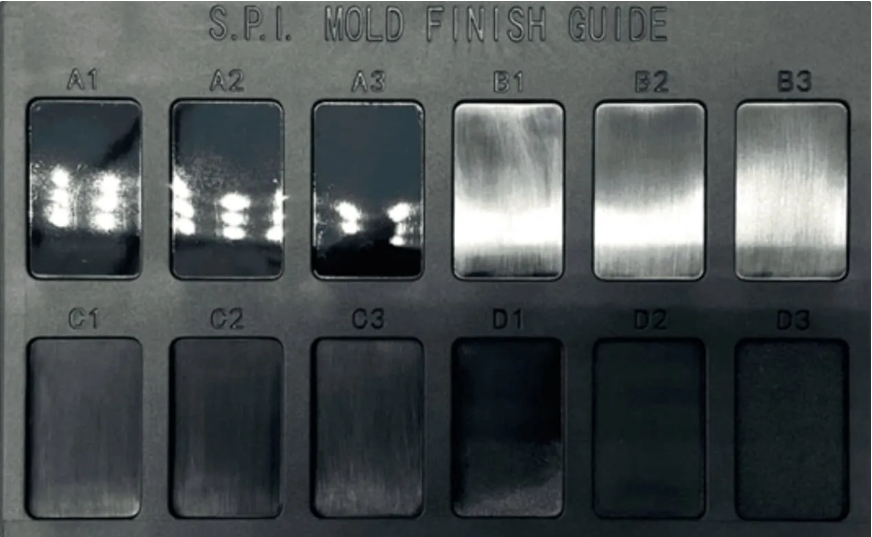Precision Engineering in Custom Mold Design
Role of CAD Software in Minimizing Defects
Excellence of precision on custom mold design depends on the quality of the Computer Aided Design (CAD) software used to eliminate flaws. Products designed in CAD contain highly accurate mold designs, so the risk of formative mistakes in the industry is greatly reduced. This attention to detail is replicated in the finished product, ensuring its quality and performance. CAD software also brings with it the capabilities to sufficiently simulate a prototype, the potential issues are detected before the prototype is created, this results in less scrap material being thrown away. Combining hte t CAM functionalities narrows the gap between design and maching, for better communication and execution. With these functions, CAD software makes the process from designing to production smooth, directly improving the product quality and manufacturing efficiency.
Prototyping for Design Validation
Prototyping is greatly important to verify mold designs prior to starting production in full scale. Technology such as 3D printing facilitates fast prototyping which means faster changes/revisions in mold approval. With speedy turn around, stakeholders can see their finding come to life before investing in mass manufacturing, ensuring all the specifications have been met. This helps both to achieve the design goals and to discover functional problems that are better solved at the system level, saving time and money. By detecting and correcting any issues early, prototyping improves the design process as well as the financial advantages associated with it, leading to a solid starting point for excellent product manufacturing.
CNC Machining for High-Accuracy Molds
CNC is vital for creating molds with high-quality surface finish, and mold precision is critical in successful injection molding. CNC machines provide the precision necessary to meet precise control specifications, as needed in high volume production. The automatic nature of CNC means that the chances of human error are reduced and this is crucial when producing a high volume of identical parts. HDHAO will fall back on enormous original molds, but HDHAO will last with high-quality, high-efficiency, and retired difficult-slightly adjusted mold machined by advanced CNC equipments, which significantly saves a cost. CNC machined moulds are always made to have high tolerance meanwhile, and the consistency of CNC machining is one of the reasons we obtained the same mould every time, which provides our customer with the highest level of repeatability and part quality possible.
Material Selection and Versatility
Tailored Polymers for Enhanced Durability
Selecting appropriate polymers for custom injection molding is very important as it contributes greatly in making the final products more durable and functional. Customized polymer formulations allow, for example, to add features such as resistance to UV or specific chemicals, which are essential in harsh environments. These material improvements materialize in novel compounds that are aimed at minimizing breakage and extending product life. Manufacturers can use specific polymers developed for specific industrial applications for there product to be long lasting in these controlled harsh conditions to boost productivity and essentially they get the most bang for they buck.
Thermoplastics vs. Thermosetting Resins
It's important to know the distinction between thermoplastics and thermoset resins when it comes to choosing the right resins for the job at hand. Thermoplastics: being able to be easily recycled and remolded, thermoplastics serve as essential materials for eco-friendly production. They bring flexibility to production, enabling modification of product designs while maintaining environmental targets. Alternatively, thermosetting resins are preferred for their high temperature resistant properties, enabling them to be used in high temperature applications. Choosing from these options is a balance between recycling and heat resistance and depends on specific industry solutions.
Reducing Waste Through Material Optimization
Utilizing material optimization methods in custom injection molding can dramatically cut waste from the process, which benefits the environment while being more cost effective. The use of data analytics to forecast the demand of materials accurately and helps reduce excess and optimize purchasing. Methods like mold flow analysis allow for the materials to be used more effectively in the injection molding process, culminating in less waste produced. This not only gives the ideal manufacturing cycle, it saves time and costs, while meeting sustainability targets. Companies that employ these tactics not only have a smaller environmental impact, but are also operating more efficiently, using resources more prudently.
To delve deeper into the intricacies of tailored polymer and material selection for versatile uses, explore further options in custom injection molding.
Process Optimization and Automation
Robotics for Consistent Part Removal
By automating robotics into the injection molding process, consistent and efficient part removal also leads to substantially increased throughput. Robotic operation is 24-hours a day and can produce a steady output of production while the operator is attending to other responsibilities. In this manner, the method of the invention does not simply reduce the cycle times, but also reduce labor cost for more economical production. With robotics, companies can offer more precise and consistent results than human operators might be able to maintain, producing better quality products.
Real-Time Monitoring of Temperature/Pressure
By using real time monitoring systems, ideal conditions in the mold are reached, which is a key aspect to reducing the number of defects due to temperature variations. Through such systems, manufacturers can also perform predictive maintenance, taking interventions in time and ensuring equipment’s longevity. In addition, by interconnecting IoT solutions, the smooth cooperation between machine parameters and operators is achieved, allowing for instant fine-tuning and ensuring the best product quality. By connecting the physical and digital worlds, this solution increase efficiency and productivity.
Cycle Time Reduction Strategies
Discovery of the bottlenecks on the production line is everything, if one is to develop effective cycle time reduction initiatives. Productivity can be greatly increased with efficient cooling. Moreover, tactics such as parallel operations and automation incorporation can result in significant improvements in cycle efficienc. Through targeting the relevant inefficiencies, manufacturers can make their operations more efficient, increase their production volume, and improve resource utilisation, thereby strengthening their competitiveness on the market. These tactics are essential to staying ahead and keeping up with high volume production requirements.
Cost Efficiency and Waste Reduction
Self-Gating Tools for Streamlined Production
The application of self-gating devices in injection molding has many advantages, such as no add-on gating system required, reduced material costs and process simplification. These devices automate molding so that minimal human labor is needed to clean molds, leading to lower production cost." Self-gating also results in quicker cycle times and more consistent part quality. This automation will increase throughput, and this work illustrates the benefits of self-gating as both an economical and time-saving approach.
Energy-Electric Machine Advantages
Energy-efficient machines are changing the molding and extrusion game by lowering power consumption, leading to both cost and carbon savings. While the capital investment for electric machines can be higher, savings in operational costs in the long run will be significant. Electric machines provide fine-tuned control of wallweight, boosting part precision and quality and reducingenergy costs in the process. According to Golev, Their benefits in terms of increasing efficiency and being environment friendly are in line with what is being sought in the industry from sustainable point of view.
Recyclability of Injection Molded Plastics
The plastic materials used in injection molding are recyclable, which parallels with the world’s sustainable development goals, and can contribute with economic and environmental advantages. Using closed loop systems offers recycling potential for plastic waste, with reduced landfill impacts and better resource utilisation. Highlighting the recyclability of these plastics in promotional activities can appeal to eco-friendly customers, enhancing brand popularity and market competitiveness. Through these sustainable practices, the producers do not just favor the protection of the environment, but gain additional value in a conscious market.
Consistency and Scalability in Mass Production
Repeatability Across High-Volume Runs
Reproducibility is important to preserve a higher quality for large volume run production. This can be trusted to deliver as promised, only consistent results to exacting standards which is required by the brands associated in real time to maintain product integrity in the market. Higher order molding technologies, as well as automation and SPC, also contribute to achieving repeatable results. Such technologies both reduce variability within production and improve efficiency and precision on the production line. With SPC techniques, manufacturers can monitor and adjust variables as necessary to keep their production at the desired quality level.
Adaptive Tooling for Design Variations
Adaptive tooling is introduced to provide flexibility for manufacturers, who can readily accept design changes, while avoiding long downtimes. ensures that companies are able to quickly respond to moving tastes or regulations changes in their products. The potential advantages of modular tooling systems are particularly enumerated for resource management and reduction of lead times. Through such investments, manufacturers can stay nimble and competitive, quickly adapting to changes in consumer taste or technological innovation.
Quality Control Protocols for Zero Defects
Strict quality control measures must be adopted in a zero-defect production facility. This requires using cutting-edge inspection technologies like AI and machine vision to improve the rate of defect detection. These include technologies which allow accurate detection and elimination of defects before that product reaches the market. Accountability checks and feedback loops are also important, as they keep up quality and improve it over time. By continuously monitoring and adjusting operations, manufacturers can maintain a standard of excellence and reliability that inspires both industry and consumer trust.
FAQ Section
How can CAD software minimize defects in mold design?
CAD software offers precise simulations and design accuracies that reduce potential errors before production, ensuring high-quality final products.
What are the benefits of using prototyping in mold design?
Prototyping allows stakeholders to visualize and validate designs, making it possible to address functional issues early on, saving costs and enhancing the final product quality.
How does CNC machining contribute to high-accuracy molds?
CNC machining ensures precision and consistency in mold production, reducing the need for adjustments and increasing efficiency in high-volume manufacturing.
Why is material selection vital in custom injection molding?
Material selection determines the durability and functionality of the final product, with tailored polymers offering specific properties suited for various applications.
Additional Information
How Can Custom Injection Molding Help Reduce Production Costs?
Custom injection molding helps reduce production costs by streamlining processes, minimizing material waste, and leveraging efficient technologies such as CAD and CNC machining to ensure faster and cost-effective manufacturing. Additionally, adopting automation and energy-efficient practices decreases labor and energy expenses, further enhancing production economics.

